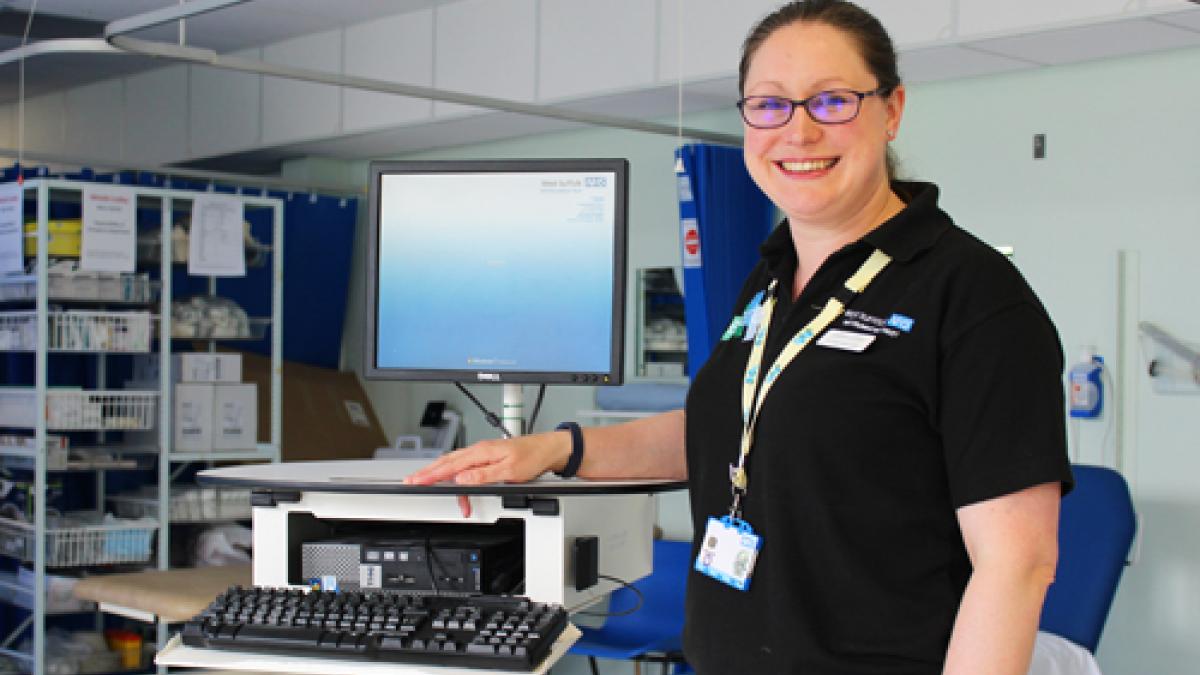West Suffolk NHS Trust’s integrated electronic patient record (EPR) project went live on 1 May with digital documents and templates designed specifically for physiotherapists.

Physios should welcome chance to be involved in major informatics developments. Photo: West Suffolk NHS Trust
Physio Sarah Judge was seconded to the trust’s £19 million Cerner Millennium EPR project in 2014 as the allied health professions (AHP) lead.
She said: ‘Initially, we were under the impression that the AHP content would be basic. The main trust priority was the nursing and medical documentation and its functionality.
‘But we’ve actually got a lot of assessment forms and other functionality in the system that we didn’t expect to have, and I think that’s because we have had a physio on the [development] team.’
The EPR includes patient administration, order communications and results reporting, clinical noting, assessments and observations, e-prescribing, care pathway management and a patient portal.
Ms Judge started working on the project part time, alongside her work as a clinical specialist in trauma and orthopaedics. But in the six months before it went live, she worked full time on the EPR. Her responsibilities included training other AHPs, who she described as being ‘enormously engaged with the whole project’.
The most challenging aspect of the role was ‘stepping outside my comfort zone’, she said. ‘A lot of the project has been about improving patient safety and experience, so it’s been about looking at other ways of benefiting patients.’
All too often hospitals focus on nursing and medical staff, to the exclusion of AHPs, according to Ms Judge.
‘I would say to physios, don’t be afraid to get involved in these projects,’ she said.
‘You need to play an active part, if you want to take things in a direction that your profession and department needs. But you can’t sit around and wait for someone else to do it for you.’
Number of subscribers: 1